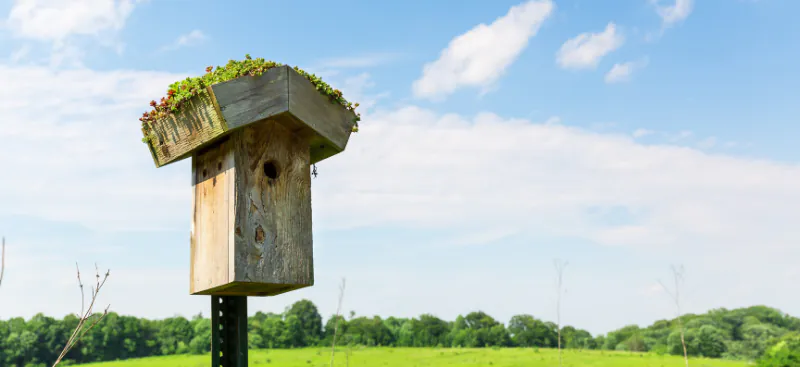The Beginner’s Guide to Putting up a Nest Box
Putting up a nest box can encourage more birds to visit and bring such excitement to your garden. But there's much more to it than simply placing a box on a tree. How high are you planning to put your box? What birds are you hoping to attract? When should you put a nest box up? Don't worry - we have all the answers to your burning questions.
Why put up a nest box?
The availability of natural nesting sites for birds is dwindling rapidly. Modern landscaping in parks, playgrounds, and gardens prioritises neatness, resulting in fewer places for birds to nest. Woodland areas are experiencing deforestation, and newly constructed houses often lack the nooks and crannies birds rely on for nesting. This decline in suitable habitats is contributing to a decrease in bird populations.
By installing a nest box in your garden or outdoor space, you become a vital contributor to the survival of these birds. Not only do you provide them with shelter and a place to raise their young, but you also get the opportunity to observe the captivating lifecycle of birds up close.
What birds use nesting boxes?
Several bird species in the UK are known to use nest boxes for breeding and raising their young. Some common birds include:
- Blue Tits
- Great Tits
- House Sparrows
- Robins
- Wrens
- House Sparrows
- Nuthatches
- Pied Flycatchers
These species have adapted to using artificial nesting sites due to the decline in natural nesting opportunities. Providing nest boxes can offer them a safe and secure place to raise their young, contributing to their conservation efforts.
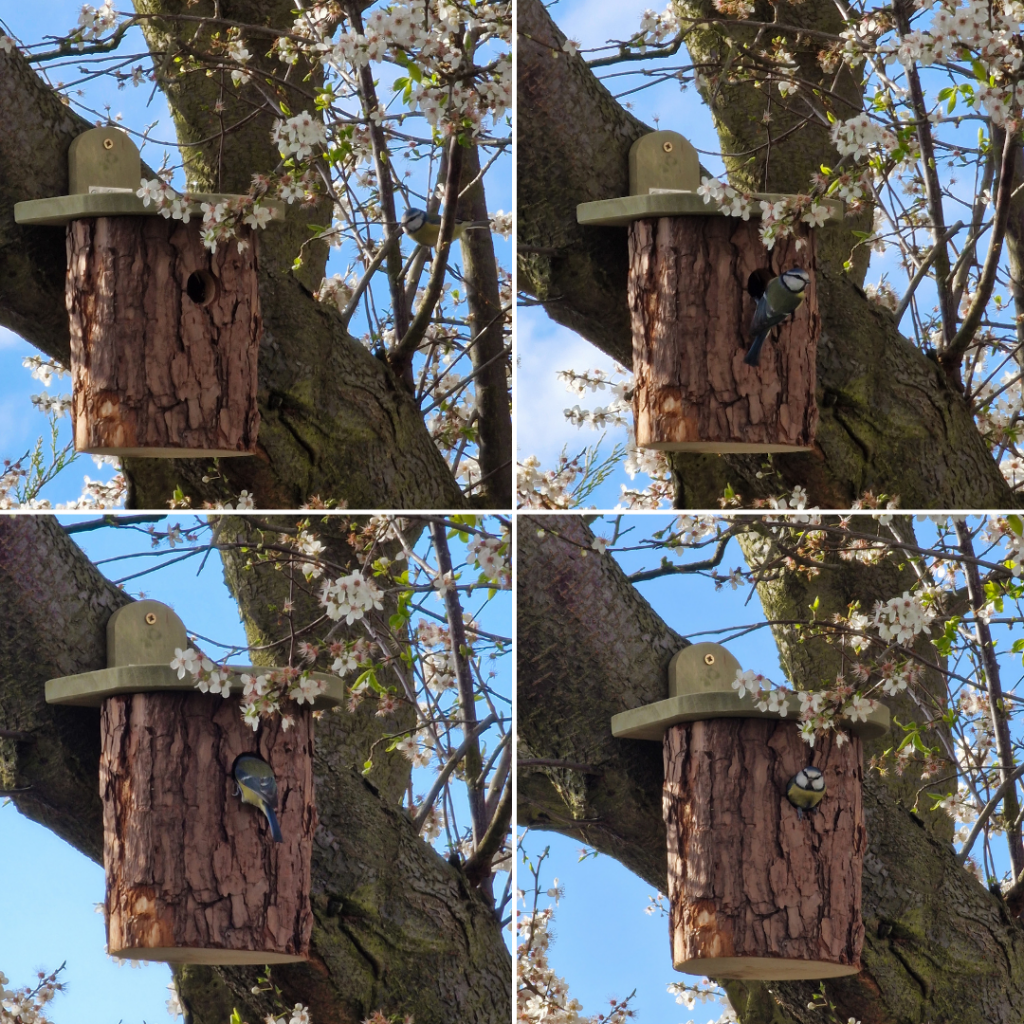
When is the best time to put up a bird box?
Autumn and winter are the best time of year to put up nest boxes, as this is when birds are seeking homes to lay eggs. Many species will begin looking in January, and some (members of the tit family) will search even earlier than that.
However, a nest box serves more than one purpose. Not only is it a good place for birds to raise their young, but it also provides protection all year round, especially outside the nesting season. So, there is no wrong time to put out a bird box.
What nest box do I use?
There is a wide variety of nest boxes on the market, coming in all shapes and sizes. While some provide the perfect nesting space for birds, others can harm and, in worst cases, kill the occupants. Here are some things you should look out for when purchasing a nest box.
Best material for nesting boxes
Only choose a box made from an insulating material such as wood or a special waterproof wood/concrete compound. The best wood for nesting boxes is cedar, oak and beech, as these will outlive boxes made of softwood such as pine. Avoid using nest boxes made of metals, ceramics, or other dense materials, as the interior can become too hot or cold for chicks to survive.
Best size for nesting boxes
The best size of a nesting box will depend on the bird as all species come in different sizes and some such as blue and great tits can lay up to 14 eggs! The floor area in the box should be at least 20 square inches. Any smaller and it may result in the bird laying fewer eggs as it won't have enough room to have its complete set.
How big does the entrance hole need to be?
A good size for a nest box entrance hole is 32mm, as this would be ideal for all small hole-nesting birds such as sparrows and tits. If you wish to only attract blue tits, a 28mm entrance hole would be better suited. On the other hand, robins prefer nest boxes with a large open front.
If you need more help on choosing a nest box, check out our Top 10 Nesting Boxes for Garden Birds.
Where to put nesting boxes?
The best place to position your nesting box is around trees or buildings which can supply shade during the day. Birds like to have a clear flight path into their nest, so keep the entrance free of any clutter or obstacles if possible.
The best height to position the box will depend on the bird. Tits, sparrows, and starlings like their boxes to be placed two to four metres above the ground, whereas robins and wrens like their open-fronted boxes positioned below 2 metres and well hidden in vegetation. The diagram below gives more insight into how high birds like their nest boxes.
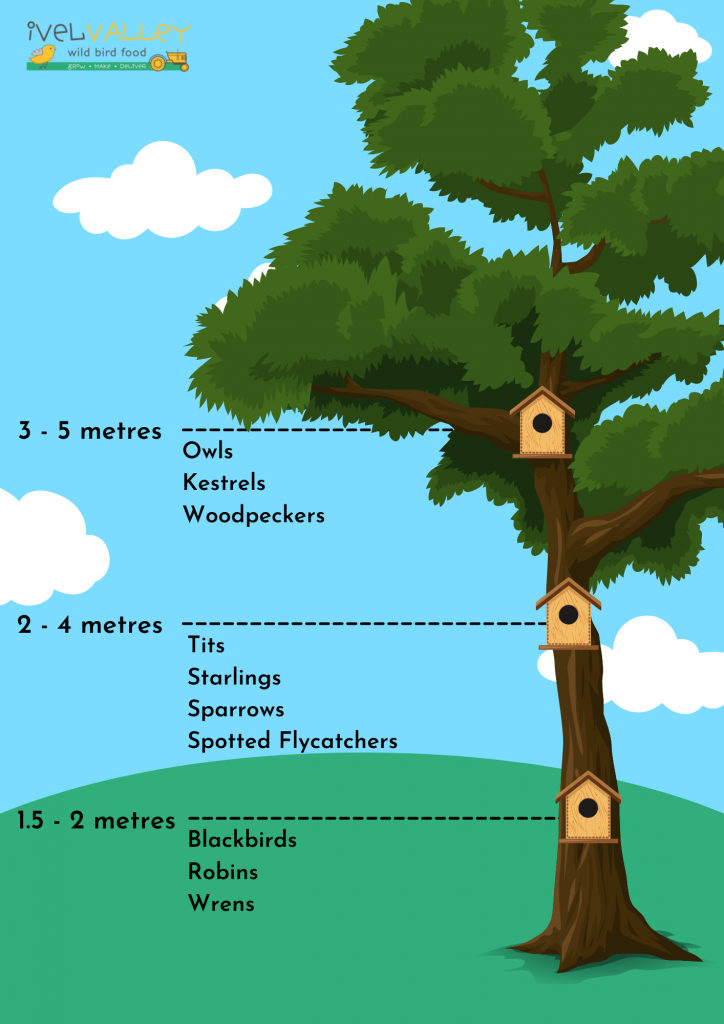
Which direction should a bird’s nest box face?
The best direction to face your nesting box is between north and east. This is to avoid strong sunlight and harsh, wet winds.
How do you attach a bird box to a tree?
When hanging your nest box, you want to avoid using nails that may rust, as this will potentially harm the tree or box, resulting in instability. Instead, consider securing the box to the tree trunk or suspending it from a branch using galvanized wire. If mounting the box on a wall, opt for stainless steel screws or nails to prevent rusting.
When do birds start nesting?
In the UK, the bird nesting season officially begins in February and ends in August, with the most active period being from March to July.
Once the nest is built, it will take 1-2 days for birds to lay their eggs. During the cold nights, birds will sleep in their nests to provide the eggs or young with warmth and protection against predators. When the young birds are old enough to fly and look after themselves, the parents will leave and never return.
How to encourage birds into nesting boxes?
Setting up bird feeders and water around your nesting box is a great way to motivate birds to settle in it. If you see the same bird flying back and forth through the box's entrance, it quite possibly means it's taking up residency and has started to build its nest.
When this happens, it would be ideal to move the feeders away from the box as activity at the feeder could disturb nesting birds.
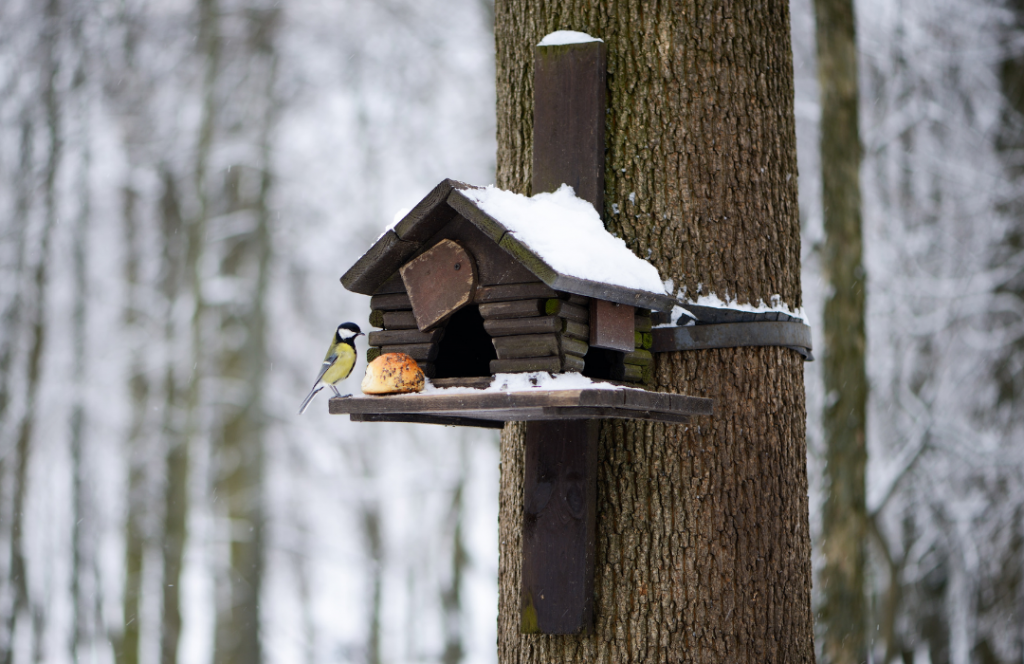
How do you attract certain birds?
You may be able to attract a particular bird species to nest in your box with the food you use. Tits will eat peanuts and sunflowers, woodpeckers and nuthatches prefer suet, and robins, wrens, and thrushes will enjoy mealworms.
The size of the entrance hole is also important to consider if you want to attract a specific species.
- 25mm hole will attract blue, coal and marsh tits
- 28mm hole will attract great tits, tree sparrows and pied flycatchers
- 32mm hole will attract house sparrows and nuthatches
- 45mm hole will attract starlings
What birds are in decline in the UK?
You may wish to attract a specific bird that is declining in population and help give the species a better chance. Below is a list of a few garden birds in decline and a link to their ideal nest box.
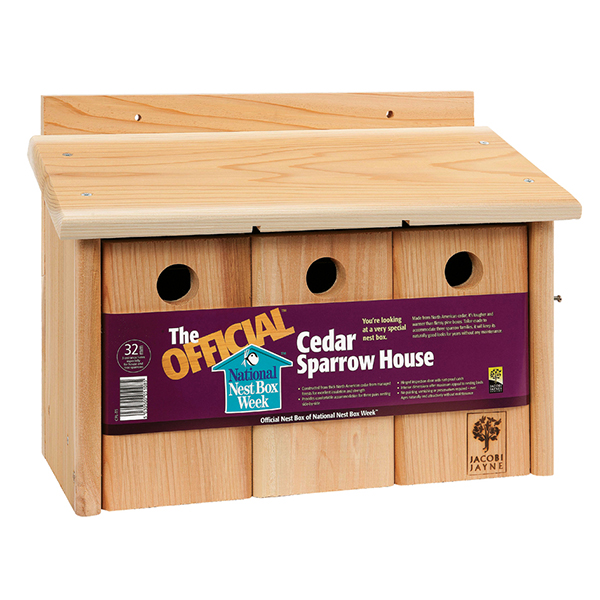
This The Official™ Cedar Sparrow House nest box offers comfortable accommodation for three pairs of sparrows nesting side by side.
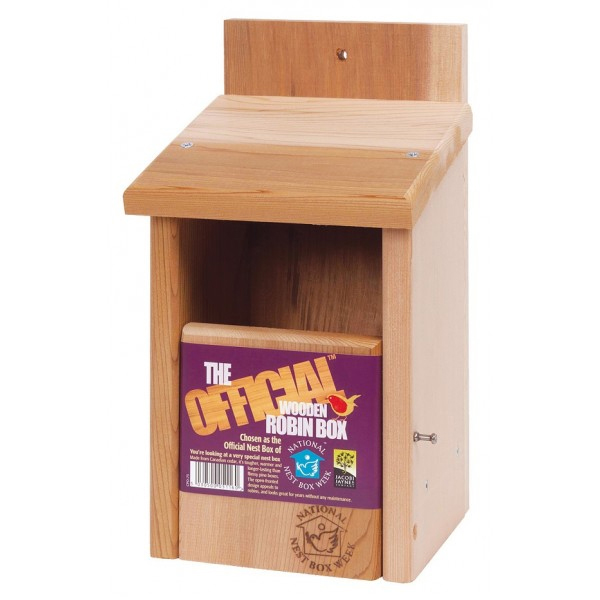
This open front Wooden Robin Nest Box is designed for Robins but is also suitable for spotted flycatchers, wrens, and pied wagtail.
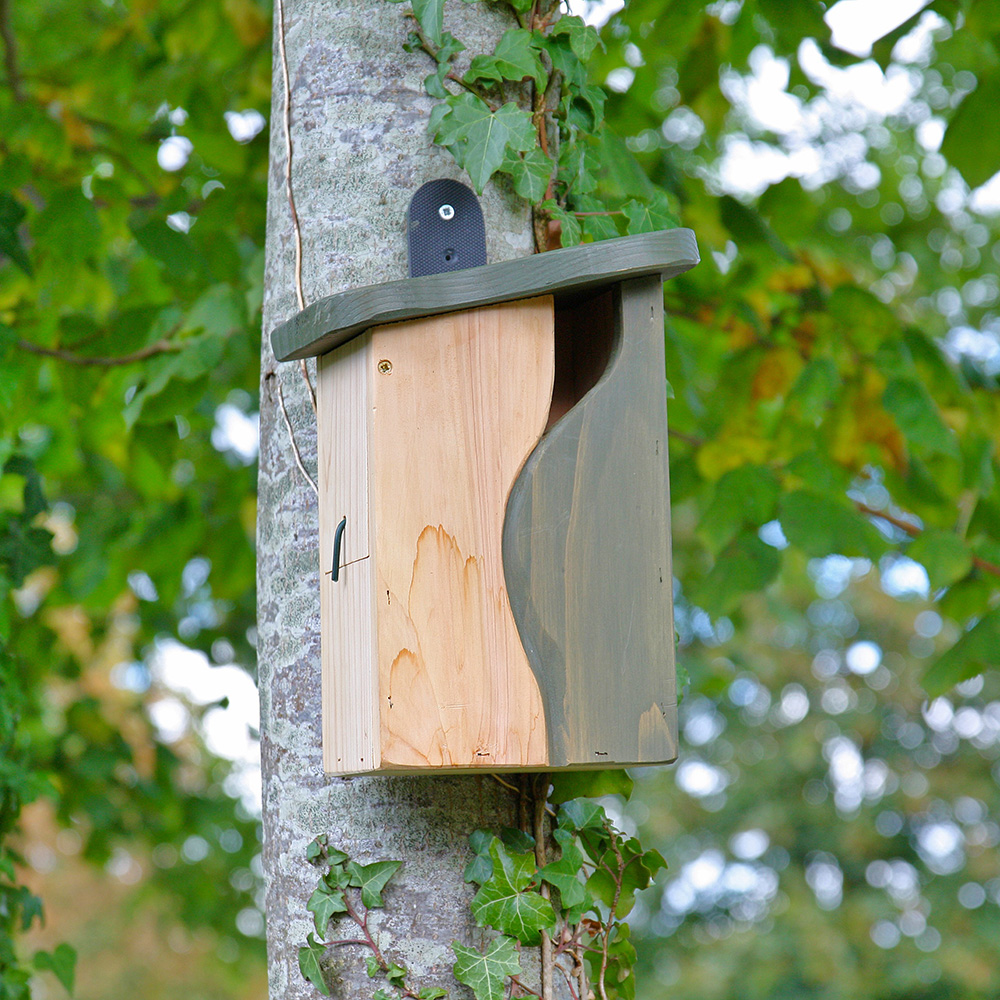
This Simon King Curve, Cavity Nest Box is designed with an entrance hole that looks like the natural hollow of a tree and is perfect for a variety of small birds including most tit species, sparrows and flycatchers.
When to clean out bird nest boxes
It is recommended to wait until Autumn, to remove old nests once the birds have stopped using the box. Be sure the nest is no longer active, as some bird species can nest until the end of September.
DID YOU KNOW?
Most wild birds are protected under the Wildlife and Countryside Act 1981, making it illegal to remove or destroy any active nest 'while it is in use or is being built'.
How to clean a bird box
When cleaning a bird box, use boiling water to kill any parasites and do not use insecticides or flea powders.
Once the box is thoroughly dry, you can place a small handful of nesting material such as clean hay or wood shavings in the box. This is so birds can use it as a safe space for roosting through the winter.
Is it too late to put up a nest box?
It is never too late to put up a nest box. From February to August, birds can use your bird box to lay their eggs and raise their young. Throughout the autumn and winter months of September to January, the birds can use nest boxes for roosting and protection from harsh weather and predators. Having well-kept nest boxes out all year will give birds the best advantage.

